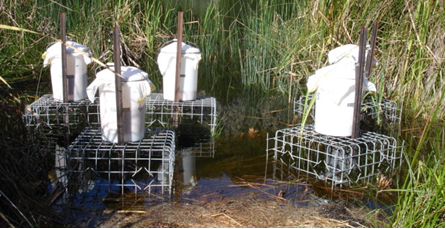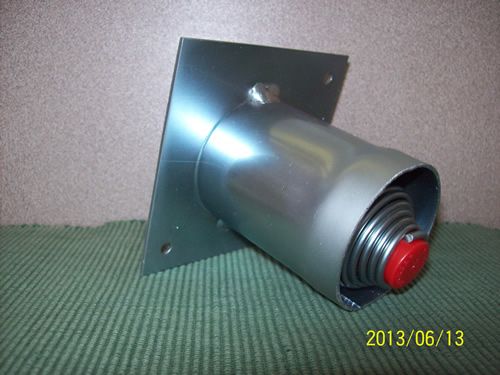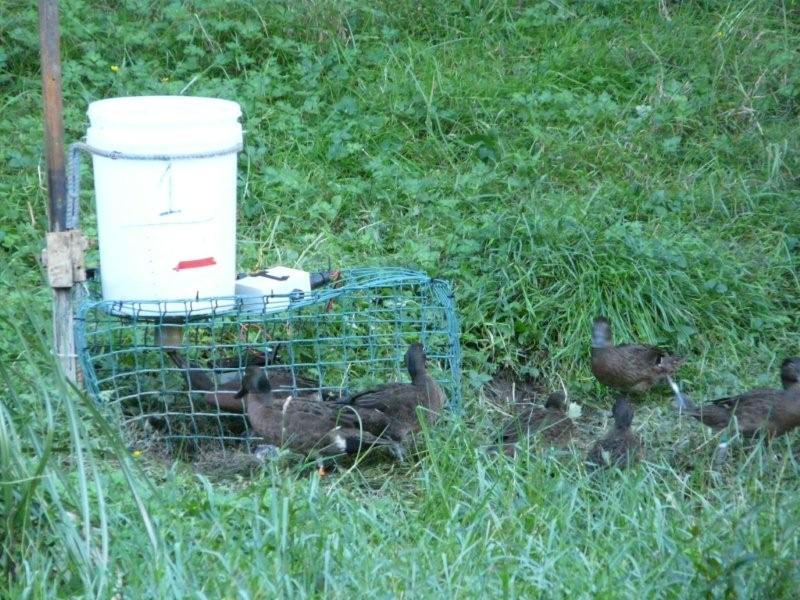Reintroduction – Automatic Feeders
Why we use them
All pateke undergo pre-release conditioning which basically means they are held in a single facility (Peacock Springs) for a minimum of 6 weeks prior to release where they are trained to identify and use white bucket nosloc feeders, they are also kept in standardized aviaries with lots of natural habitat and cover which mimics the wild and gives us a more consistent pateke behaviour.
As the captive diet which consists of a specially formulated pellet designed for pateke / waterfowl (called teal maintenance and teal breeder pellets) does a brilliant job meeting all their nutritional needs it is lower in fiber than a natural wild diet (as determined by a Masters student), as such freshly released birds do not have the correct jut physiology or morphology (cecum length is not long enough) to adequately update the nutrients which leads to starvation even though the birds are eating lots.
To remedy this we continue feeding the teal pellets in the same feeders they use in captivity at the new wild sites to give the birds time to naturally adjust their gut (takes 6 weeks approximately) while they eat both a wild and captive diet.
We have tried adjusting the captive pellet formula previously but the extra high fiber diet created more problems than solutions, hence why we have stuck with this true and tested method.
The additional spin off from using feeders has been to increase our site fidelity, with birds sticking to our initial release area longer and resulting in better survival rates of releases.
Sites with marginal summer (dry) habitat supplementary feeding birds can help establish a population, ideally this is a short term option, but one which can be used in the early stages of getting a population kick started and established.
Where to buy them from:
Feeders are your responsibility to purchase directly from: www.nosloc.com
Requirements: 6+ protected 3mm pellet size version with bucket, waratah bracket & waratah
You will need 6 – 8 feeders spread around your release area to avoid pairs taking up a territory and excluding all other pateke from that feeder, you can use your own buckets (just need to drill the correct size hole in the bottom) and waratahs if you already have them.
They can be placed either over the water like in the picture below or on land where they can easily been seen directly from the water, and with an easy access gentle slope so birds can easily see them, then walk up the bank to the feeder.
Feeders need to be checked regularly for blockages (check to see pellets fall out when you gently tap the spring), and there is enough food inside the bucket (remember the middle empties out first, so what my appear like a lot from the outside, may only be on the sides of the bucket and the middle has been used up so no actual food is falling out for the birds.
Mallard and Pukeko protection (cages)
These can also be purchased from Nosloc.com.
If you want to save money by not feeding Mallards and Pukeko you might want to consider making up an excluder cage like in the images below. Mallards especially are very quick to figure out the feeders have lots of food inside them, and what might start off with just a few mallards can easily attract hundreds of them in a matter of a few weeks. Not only does it cost you a fortune it makes it hard for the pateke to get a feed which is the whole point of the exercise.

Information below from Matt Maitland
The reo-mesh is 75mm cell. Looking at the pic it is about 7 cells cubed being about 500mm each face.
The Tuhua model you can see the cut reo-mesh aperture to give 100 x 100mm duck access.
We also added a netball hoop on the warratah to help stabilise the bucket which slid down through this which you can see on the mesh version.
The pukeko exclusion alcoves I have no photo of. These were either plastic trellis or similar fashioned as a ‘porch’ around the entry aperture. This prevented puk’s putting their head through the duck entry and hovering up spilt feed and excluding pateke.
Below is a pic from the MSc study done on feeder use (The box on top of the ‘feeder use’ pic was a PIT tag receiver for an MSc study).
Order From:
07 878 6868
www.nosloc.com
Information updated 2/11/2016



